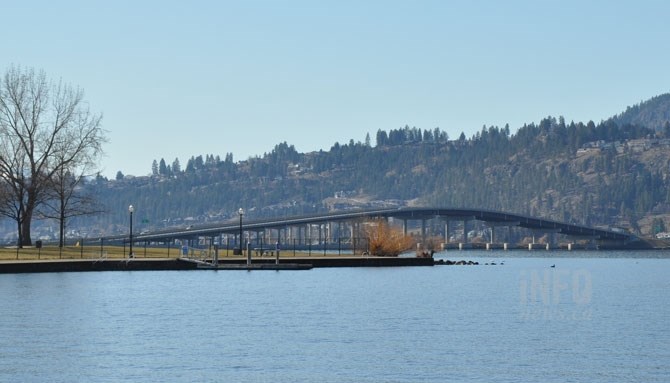If you think Bennett Bridge is crowded now, just wait until it actually fills up
No matter how clogged the W.R. Bennett Bridge across Okanagan lake gets, it hasn’t yet reached its maximum capacity.
The Ministry of Transportation and Infrastructure told iNFOnews.ca, in an email, that the capacity is 80,000 vehicles per day.
It has never reached that on a single day, the busiest days being the Fridays before summer long weekends.
The busiest day on record is June 30, 2016 when 76,454 vehicles crossed the bridge connecting Kelowna to West Kelowna.
Friday, July 28, 2017 was almost as bad, hitting 76,363.
So what does it mean for drivers on the bridge if it actually reaches that 80,000 per day capacity?
“If a highway were to reach its volume capacity, drivers would begin to observe congestion, difficulty maneuvering, and lowered speeds and stoppages under otherwise good conditions,” the province says.
Not that drivers aren’t already experiencing those kinds of driving conditions during their daily commute.
The 80,000 a day is for a 24-hour period. That averages 3333.33 trips per hour.
Data provided by the Ministry shows that, during the typical morning peak hour from 6:45 a.m. to 7:45 a.m., there are 3,000 to 3,500 vehicles inbound on the bridge.
The 3:15 p.m to 4:15 p.m. evening peak hour is typically worse, at 3,200 to 3,700 outbound trips. These numbers vary significantly by time of year, the email says.
In the summer, morning hours change to 7-8 a.m. and volumes drop to 2,600 to 3,100 vehicles inbound.
The afternoon peak hour is 3:45 to 4:45 p.m. in the summer with 3,300 to 3,800 outbound vehicles recorded.
Average annual daily traffic counts have not changed that much over the years despite rapid population growth.
Data provided by the Ministry goes back to 2012. The bridge opened May 25, 2008.
In 2012, when the regional district's population was a mere 186,128 (according to Province of B.C. estimates), the average daily count was 50,589.
In 2019, with more than 31,000 more people living in the area, there were an average of 59,197 vehicles a day on the bridge, an increase of about 8,600.
Usage dropped in May of 2020 by 35% from the year before. Last year usage was down only 9% from the pre-pandemic May 2019. May 2022 counts were up only 0.2% (102 more drivers per day, on average) above 2019 levels.
The data provided also shows that 89% of vehicles were under six metres long, on average, over the past 10 years up to 2021.
The Ministry was a little vague when asked if anyone there is looking into a possible second crossing.
READ MORE: Bennett bridge far ahead of capacity, way behind in planning for second crossing
The Central Okanagan’s first region-wide transportation plan was adopted in November 2020 with barely a mention of a second crossing, other than to say it won’t be needed until at least 2040, although approaches to the bridge would be at capacity before then.
“The ministry is completing the Central Okanagan Integrated Transportation Strategy, an integrated strategy to improve the Highway 97 corridor through the Central Okanagan,” the email says.
It references the Central Okanagan plan but it’s unclear when the province’s strategy will be finished. A link to a Ministry web page on the plan does not give a timeline and a map on the page only shows the existing Highway 97 corridor, not a second crossing.
“The Central Okanagan Integrated Transportation Strategy will identify multi-modal (including walking, cycling, transit and driving) transportation solutions while integrating transportation and land use planning to support economic and community growth,” the email says.
The regional transportation plan and a 2015 government review of a second crossing option said the current bridge will not reach its capacity until 2040 when the region’s population is expected to reach 275,000.
READ MORE: Central Okanagan MLAs see need for second Okanagan Lake crossing
Given that there could be more than 275,000 residents by 2030 – a mere eight years from now – that capacity could be reached much sooner.
While every bridge project is different, the email says that “bridges are one of the most complex types of infrastructure that the Ministry builds in the province,” so it’s realistic to expect such a major project to take five to 10 years from planning through construction.
To contact a reporter for this story, email Rob Munro or call 250-808-0143 or email the editor. You can also submit photos, videos or news tips to the newsroom and be entered to win a monthly prize draw.
We welcome your comments and opinions on our stories but play nice. We won't censor or delete comments unless they contain off-topic statements or links, unnecessary vulgarity, false facts, spam or obviously fake profiles. If you have any concerns about what you see in comments, email the editor in the link above.




